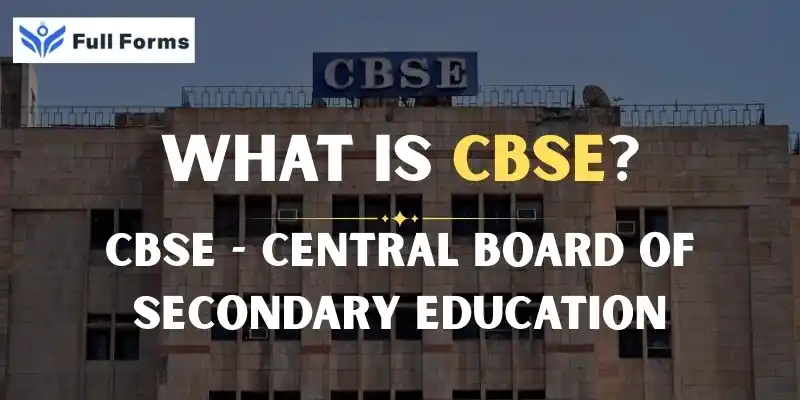Central Board of Secondary Education
(CBSE)

Description
Central Board of Secondary Education (CBSE): The Pillar of India’s Schooling System
Education is a pillar of any progressive society. In India, the most recognized part of school education happens to be through the Central Board of Secondary Education (CBSE). This has been known for a structured curriculum and uniformity across the country, besides giving more emphasis on holistic learning. CBSE has come in handy and played a great role toward shaping academic futures for millions of students.
The Central Board of Secondary Education is a national education board working under the Ministry of Education, Government of India. It controls and regulates secondary and senior secondary school education all over the country. Public and private schools have to get affiliation from CBSE and follow a common curriculum and academic structure.
At present, more than 27,000 schools in India and several other countries are affiliated with CBSE. This makes it one of the largest educational boards in the world.
History and Origin
CBSE actually started as the Board of High School and Intermediate Education, Rajputana back in 1929. The idea was to offer one common setup for schools all over India mainly catering to those children of central government employees who had to move frequently because their parents were posted from one place to another. Over several decades, it transformed not only structurally but also functionally and came to be known as the Central Board of Secondary Education from the year 1962.
It was a very major move towards the centralization of education, as well as standardized exams, making quality education to students at any location possible.
Core Objectives
CBSE has come into operations with a vision and core objectives towards betterment in quality school education:
- To set academic standards for affiliated schools.
- To hold public examinations at the end of Class 10 and Class 12.
- To prescribe conditions of examinations and ensure uniformity in assessment.
- To apply new ways of teaching and learning.
- To boost life skills, values, and side growth.
- To aid schools with training plans for teachers and leaders.
CBSE does not eye only book learning— it fosters sharp thought, solving skills, and full growth.
Curriculum and Subjects
A major strength of CBSE lies in its structured and standardized curriculum. Designed by the National Council of Educational Research and Training (NCERT), it is updated regularly to meet the changing needs of education in society.
Subjects offered are:
- Languages – Hindi, English, Sanskrit, and regional languages
- Science and Mathematics
- Social Science
- Information Technology
- Commerce and Humanities – subjects at the senior secondary level
What places CBSE at the heart of its uniqueness is the basic emphasis on conceptual clarity and not rote memorization. Students are encouraged to understand the reason for anything they study, leading to long-term learning and not just a temporary recall.
Board Exams and Continuous Evaluation
CBSE is most popular for holding the All India Secondary School Examination (AISSE) of class 10 and the All India Senior School Certificate Examination (AISSCE) of class 12. These exams get accepted in colleges, universities, and jobs all over the country and outside.
In recent years, the periodic tests, project work, practicals, and assignments that this paper speaks about have recently been introduced as a part of the new Continuous and Comprehensive Evaluation (CCE) system and internal assessments that are going to take place. So, this reduces the burden of final exams and helps in a better-balanced way of assessment. It means final exams which were earlier compulsory for everyone will now be accompanied by internal assessments. Internal assessments encourage students to learn continuously throughout the year.
Digital Initiatives and Skill-Based Learning
- Academic Repository CBSE – A digital platform where certificates, marks sheets, and syllabi can be accessed.
- DigiLocker Integration – Certificates are stored digitally for students.
- CBSE Podcasts and YouTube Channels – Visual and audio learning provides as much possible tools.
- Subjects based on skills – Vocational courses have been introduced. Life-skills learning has also been initiated.
International Presence
CBSE has an international presence. Schools in more than 26 countries teach the CBSE curriculum, such as schools in the UAE, Singapore, and Nepal among others. This helps the Indian diaspora settle their children with education of the same standard irrespective of the place they are living.
Why Choose CBSE?
Below are some basic reasons for which parents and students prefer choosing CBSE:
- National and international recognition
- Student-friendly approach
- Regular syllabus revisions
- Uniformity across schools
- Focus on entrance examinations like JEE, NEET, etc. which are based on the syllabus of CBSE
The Central Board of Secondary Education has grown from a small group in the 1920s to one of the most trusted and well-known education boards in India.
